
Pros and Cons of LED
he momentum toward energy conservation and conversion to LED has been accelerating in Japan since the Great East Japan Earthquake in 2011. What has been changed, improved, or worsened by the move? To explore deeply into this issue, a questionnaire survey on LED was conducted to IALD Japan members in July 2021, with responses received from 34 people. This seminar offers an opportunity for members to express their opinions and to think about LED lighting based on the questionnaire, inviting Ms. Chieri Iizuka, lighting designer from Chieri Iizuka Lighting Design, as a moderator.
The seminar started with a discussion regarding the pros of LED.
“Dimensions of fixtures”: Mr. Ken Okamoto (Ripple design) says that, thanks to the technological development to downsize the LED light source and achieve higher power efficiency, LED has evolved dramatically in terms of size, with an increasing number of higher-power lighting fixtures in more compact size, which are unimaginable with conventional lighting sources.
“Color rendering”: Ms. Hongjoo Park (Miki Matsushita Lihgting Design Co., Ltd.) says that a wide range of color temperatures available with diming and toning functions makes it much more convenient for lighting design plans, compared to the old days when only options available were fluorescent lamps and incandescent lamps. Furthermore, with IoT technology, we are expecting new LED experience that was never possible in the past.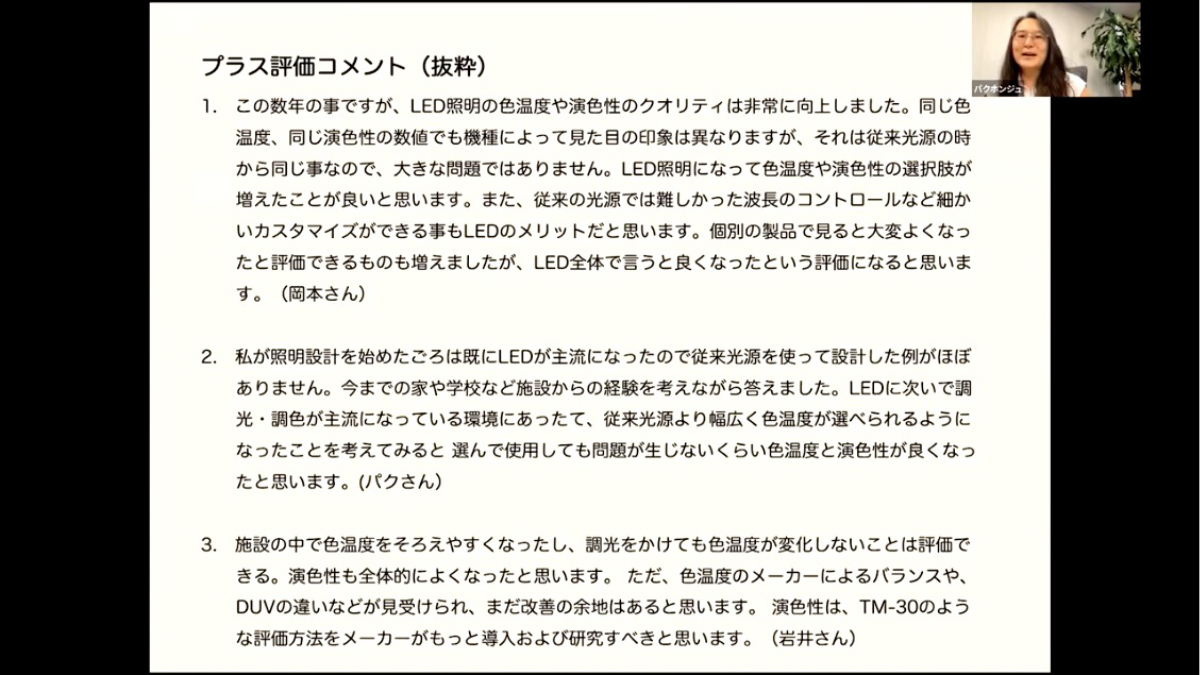
“Fitting, downsizing, and longevity”: Mr. Hirohito Totsune (Sirius Lighting Office Inc.) says that LED enabled downsizing, longer life span, and energy saving for lighting fixtures, which in turn enriches the variety of outdoor lighting, and as a result, provided an opportunity for the general public to realize the importance of lighting.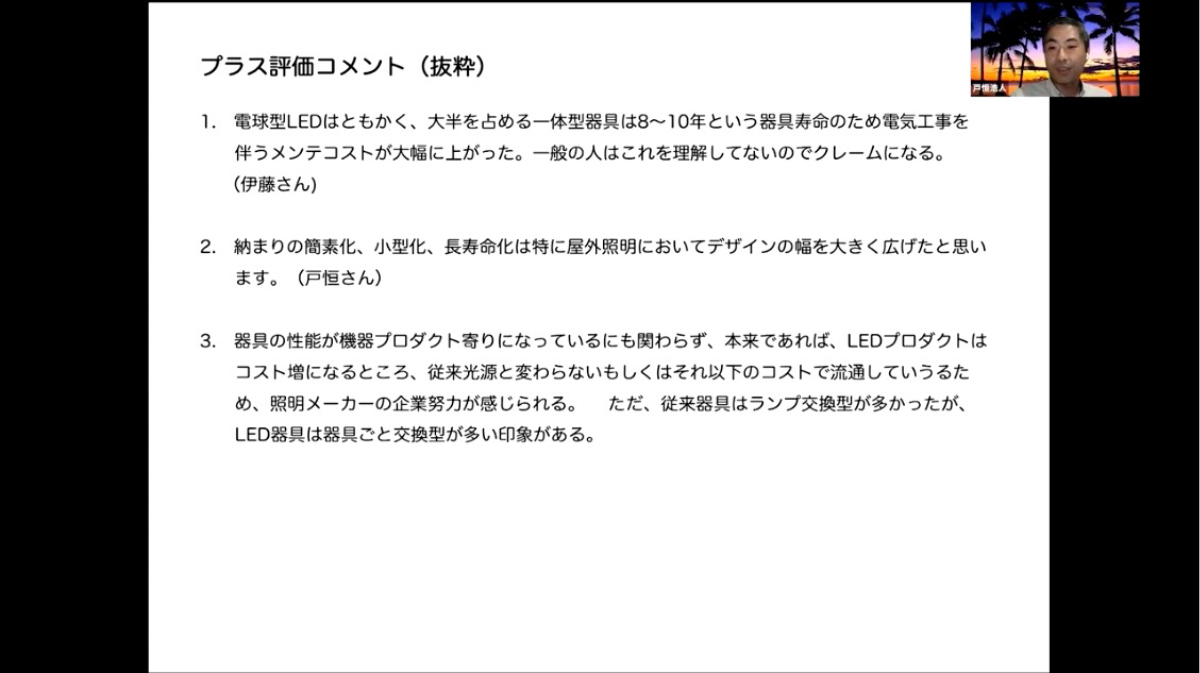
Next, a discussion regarding the cons of LED and what worsened.
“Glare from lighting fixtures”: Mr. Kazuhiro Nagashima (Chips LLC) says that a complete lack of glare control, due to the distinct properties of LED, which emits light only to the front, has diminished a feeling of excitement that he used to have when controlling the glare from halogen lamps in the past, and it was unfortunate for him.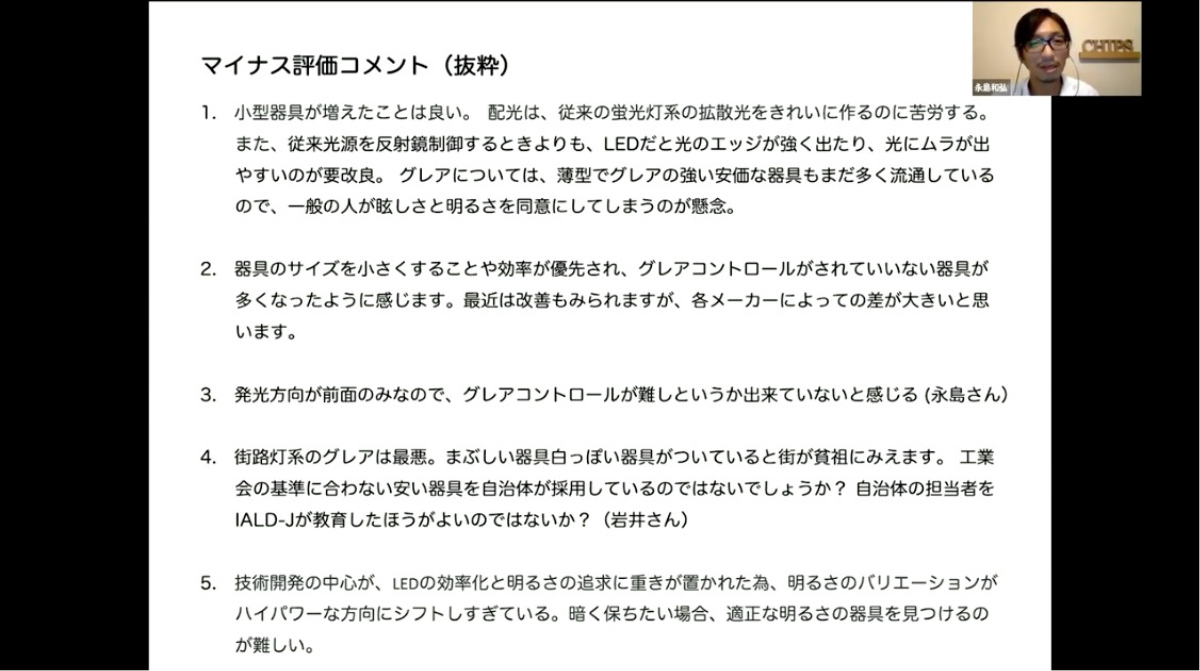
“Dimming”: Mr. Kentaro Tanaka (Lighting Planners Associates Inc.) says that the comfort provided by lighting in the space is essential for people. Since there are LED lamps from various manufactures with different lighting intervals depending on the compatibility with dimmers and control systems, it would be much better if smooth dimming becomes the norm from a user’s standpoint.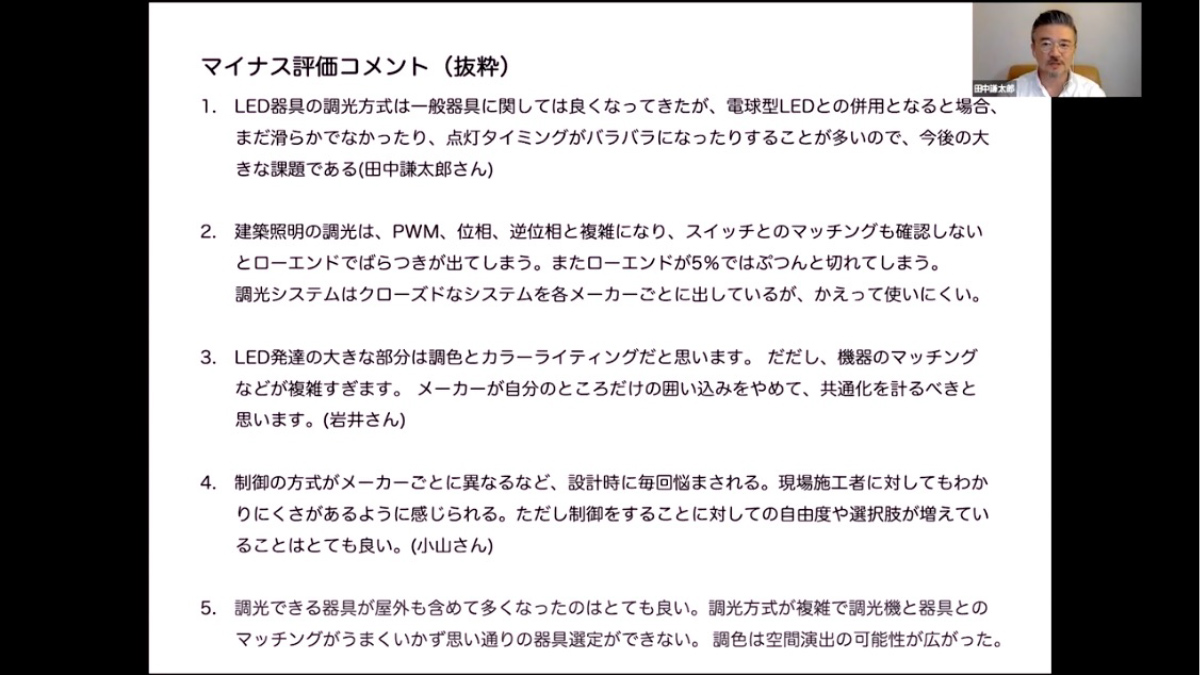
“Replacement of lighting fixture”: Mr. Takafumi Kubo (Mantle Inc.) says that current LED lighting typically requires a full replacement of the fixture. Considering the downsizing trend of LED lighting, a downlight fixture planned with the hole size of ɸ100, for example, might become smaller in 10 years’ time maintaining the same illuminance, which could result in leaving a rather large hole in the ceiling. There is no guarantee that the same light fixture will be available in the next 10 years, so we are very worried as professionals who select the fixture. Therefore, consideration on future maintenance is crucial for the development of lighting fixture.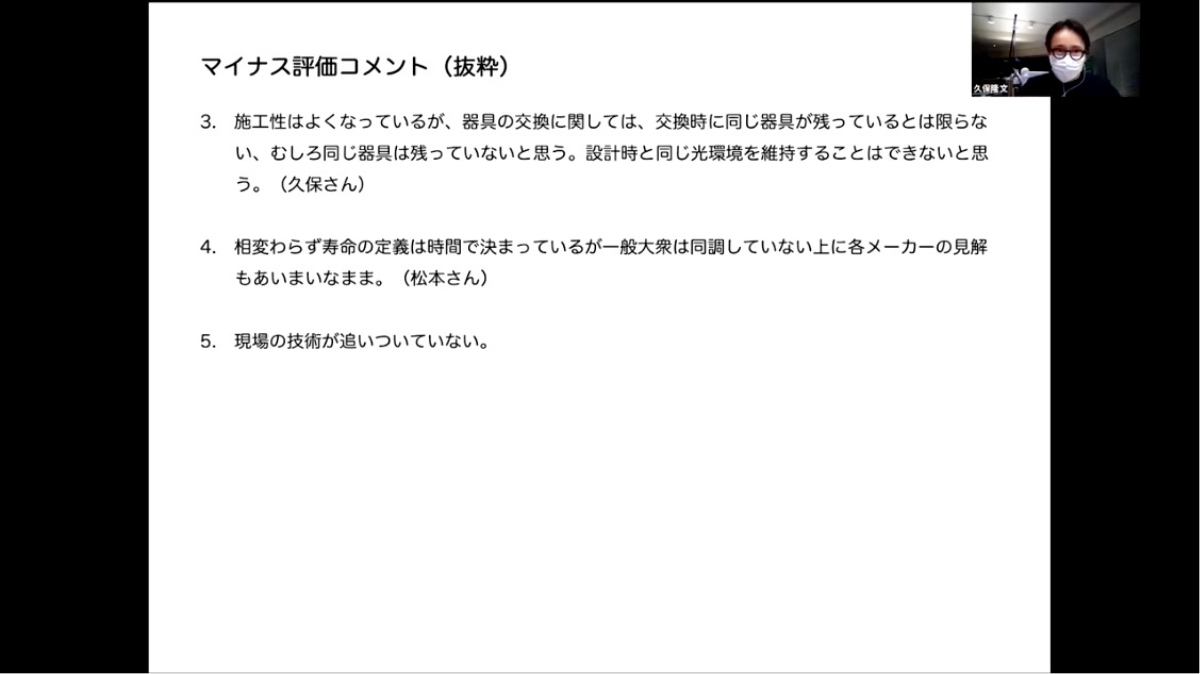
“Reuse of lighting fixtures”: Mr. Nagashima says that LED lighting is typically an integrated product with a light source and fixture, which requires replacement of the entire apparatus when changing the light source. As a result, the replaced LED lighting becomes an industrial waste. He pointed out that such system goes against our efforts today to establish a recycling-based society unless we try to develop a system that could easily disassemble and recycle the fixtures instead of disposing of them.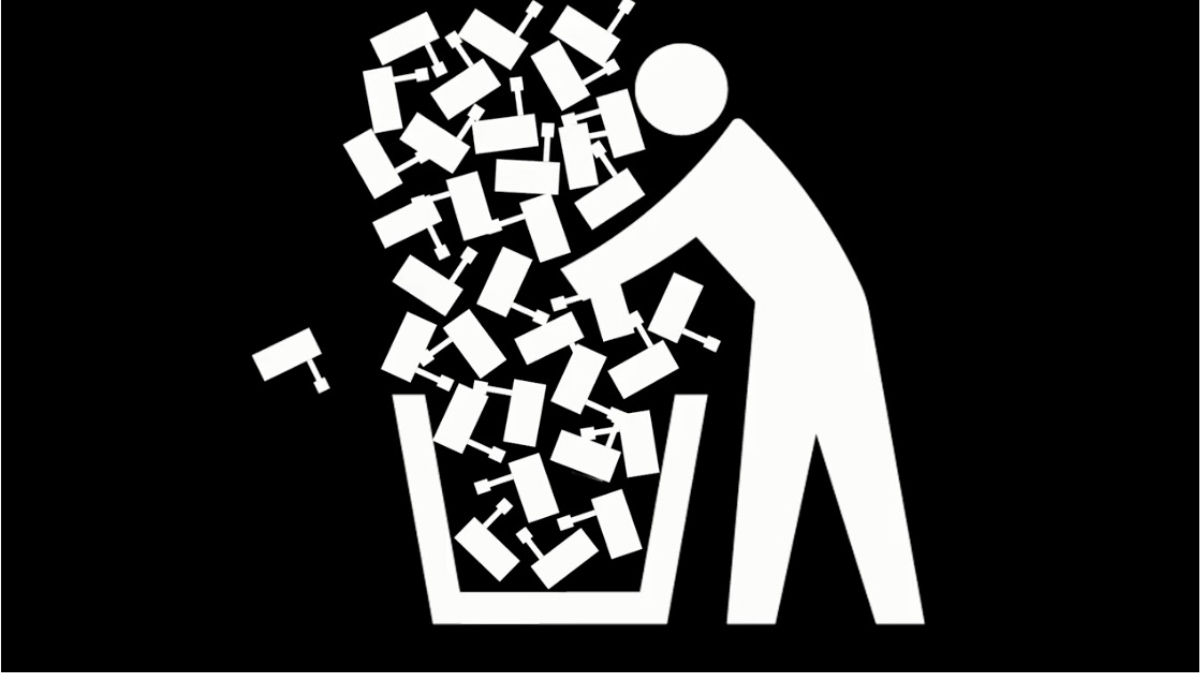
The questionnaire also asked about any horrible use of LED lighting found nearby, and about half of the members argued about “the glare from streetlights and security lights, and their high color temperature.” In this regard, Mr. Totsune says that most of the streetlight fixtures for public streets are pre-specified, and the reality is that they continue to illuminate in an unsuitable manner. He also says that he always thinks it is sad to see the poor design quality of public spaces in Japan, in comparison to foreign countries.
At the end of the seminar, Ms. Iizuka concluded, “the lighting environment becomes rich with the maturity of the culture. We, as lighting designers, wish to create a richer lighting environment. There is something you can do. We would like to think about this together.”
Profile
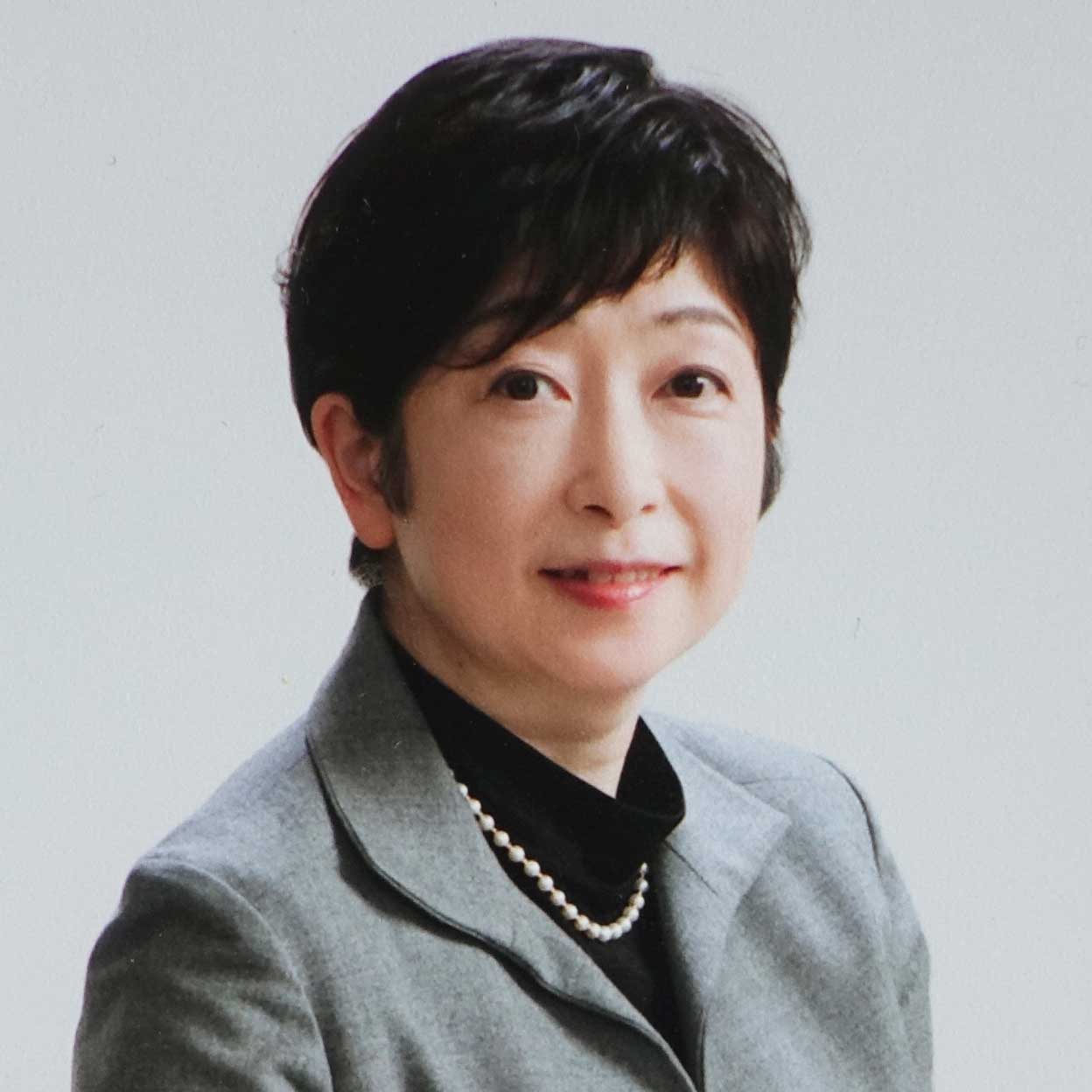
Chieri Iizuka
Lighting Designer
Chieri Iizuka Lighting Design
